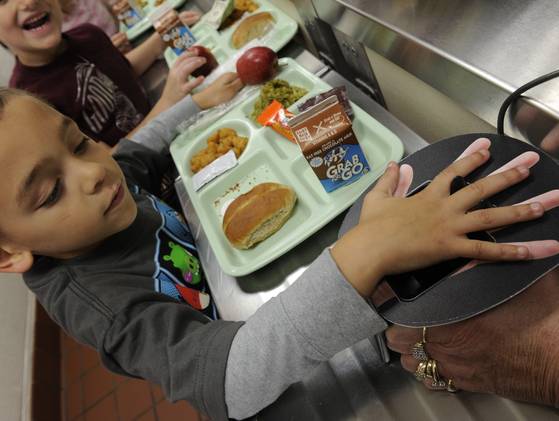
Palm-scanning technology is popping up nationwide as a bona fide biometric tracker of identities, and it appears poised to make the jump from schools and hospitals to other sectors of the economy including ATM usage and retail. It also has applications as a secure identifier for cloud computing.
Here’s how it works: Using the same near-infrared technology that comes in a TV remote control or Nintendo Wii video game, the device takes a super high-resolution infrared photograph of the vein pattern just below a person’s skin. That image, between 1.5 and 2.5 square inches, is recorded and digitized.
The PalmSecure device is made by document-scanning manufacturer Fujitsu. So far, no other company has a palm scanner on the market — though at least one other company is working on the technology.
Like many technological breakthroughs, the development began accidentally. A decade ago, a Fujitsu engineer in Tokyo mistakenly ran his hand over a page scanner and it yielded an output that piqued his curiosity. Testing eventually showed that the veins in the palm of your hand are as unique as a fingerprint and can be photographed under infrared light.
Fujitsu has seen double-digit quarterly sales growth in each of the last two years, says Bud Yanak, director of product management and partner development for Fujitsu Frontech North America.
Palm scanners are installed in more than 50 school systems and more than 160 hospital systems in 15 states and the District of Columbia, Yanak says.
Pinellas County Schools were the first in the nation to bring palm scanning to their lunch lines about 18 months ago. They are being used by 50,000 students at 17 high schools and 20 middle schools. Soon, the program will expand to 60,000 more students at 80 elementary schools, Dunham says. The 2% of students who opt out can still use cash.
He says hygiene isn’t a concern because students don’t need to touch the device, but only hold their hand directly above it, to register a scan.
At hospitals, the scans are making patient registration more efficient, and prevent sharing of information by patients that could lead to insurance fraud, says Carl Bertrams, senior vice president of sales and marketing for palm scan software maker HT Systems in Tampa.
A palm scan’s precision record-keeping also avoids possible confusion if patients have the same name. For instance, a hospital system in the Houston area with a database of 3.5 million patients has 2,488 women in it named Maria Garcia – and 231 of them have the same date of birth, Bertrams says.
HT Systems president David Wiener won’t reveal revenue but says that since 2007, they’ve got more than 160 hospitals for clients and have scanned more than 5 million patients.
At Wisconsin’s UW Health system, palm scans have been used for about two years, says Dawn Gramse, a senior systems analyst. Soon, they’ll start using self-service palm-swiping kiosks for patients to check themselves in.
“You’d hear about other biometric scanners that are out there, and you’d see the Mission Impossible movies with the eye scanners, and you’d never think you can integrate that kind of technology into a hospital,” she says, “but you can.”
Not everyone loves the idea of scans.
Students in Carroll County, Md., schools are using lunch line palm scanners, but 7-year-old Ian Webb isn’t one of them. His father, Michael Webb, decided to have Ian, a second-grader, opt out of the program at Piney Ridge Elementary in Eldersburg.
“My son is not using the technology,” he says. “I’ll be honest, I think it’s horrible. It’s an intrusion into our children’s rights.”
Webb says he’s concerned that use of the scanners by elementary school students normalizes the use of biometrics and anesthetizes young children to recognizing privacy violations later in life.
“I understand taking an iris scan of a pilot at an airport, so you know it’s the right pilot flying the plane” he says. “This is that level of equipment they’re installing in a line that serves steamed corn. I don’t think it rises to the level of steamed corn.”
Chris Calabrese, legislative counsel for the American Civil Liberties Union in Washington, says the key to this particular kind of biometrics — that is, the kind a user consents to, unlike some facial recognition software — is ensuring that all data be treated sensitively.
“If it’s a technology that works really well, it won’t be long before you’re offering your palm in a lot of different locations, and you will be concerned about who’s got access to that information and what they want to do with it,” Calabrese says.
USA Today has the full article









